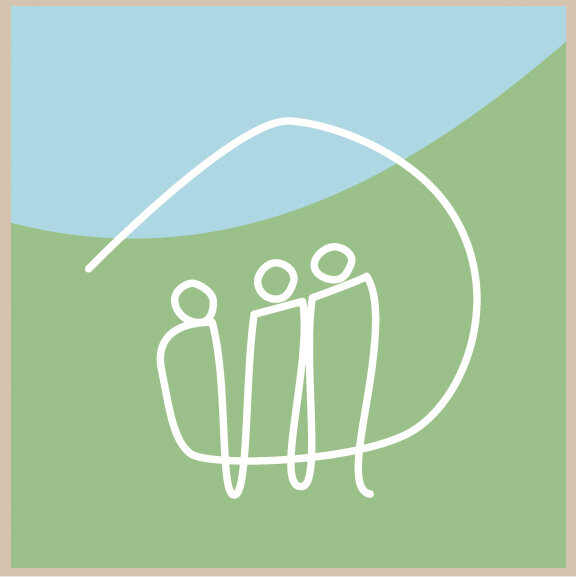Illustration by Antoine Maillard
“A healthy social life is found only when, in the mirror of each soul, the whole community finds its reflection, and when in the whole community, the virtue of each one is living.” -Rudolph Steiner
Some folks thrive in community, others struggle. I used to feel a little guilty about organizing new cohousing communities that brought together the coolest, most responsible people in town. The can-do, type-A personalities into one ghetto. It usually takes very capable folks to pull off cohousing. The shipmate that navigates the large schooner to an entirely different land. S/he and cohorts must plan the journey, gather crew members, assess their skills, encourage participation from everyone, and set sail onto the vast, uncharted sea.
Public hearings, financing, building– in the planning phase, not everyone has to be gifted the aggregate shine of effort has to move things forward. I have learned that there is always something for people to do. Not until they move in do you realize that social dynamics change for some. Some folks have autism, Down syndrome, or ADHD or one of the other 200 DSM diagnoses. To weave them into a functioning community, cohousing or something as benign as a functioning neighborhood requires understanding, consciousness, empathy and a technique to help them plug in.
Weathering high seas and big storms and landing the boat may feel like a battle you won together, as a group. Then everyone gets into their own individual boats and settle. That’s when it gets tough on some folks, who worked hard like everyone else, but have a hard time fitting in. Apparently, when “can-do” was the order of the day, they did more than their share, but when it came to fitting in after the move, that was another question. They may be awkward conversationalists; they may be intimidated by those amazing conversationalists. That was probably why they shrank.
However, it is the larger committee’s responsibility to help them fit in by resonating with them at some level, and this requires a willingness. They do not need your sympathy. But to make the community work, they do require your empathy. How do we work this out together? Cohousing desires inclusion, but inclusion as a conscious act and it won’t happen as an accident.
In the context of writing my last book, One Life Live It!, I read so many fascinating stories about people who are “left out”, even when “let in”. One young man with high-functioning autism wrote, “I never went to recess my entire elementary school, because it was too hard having such unique emotions that no one else related to or could even imagine relating to. My heart was racing with a feeling of not fitting in, self-consciousness, wrought anxiety, isolation and loneliness--I couldn’t stand it. So, I stayed in the classroom; sometimes I talked to the teacher, sometimes I read; I tried to escape to another world, sometimes homework; you can imagine it was hard staying inside”.
Neurotypical people need patience. So, you should invite all those who are new to the meetings, and those who are or have been marginalized at any level. Just talk to them. Even at complicated committee meetings, like finance or energy savings, you will be surprised how useful they can be sometimes. Suzie volunteered to call rental companies to see what a three-yard refuse bin costs, for this weekend’s landscape clean-up! If you live in wildfire territory you know what I’m talking about.
There are two early essential ingredients to successfully being in the community: be on time, be thoughtful of others. Both are easy to gauge and measure, whether you do them or not. If you are chronically late for meetings, stop everything and work on that specifically. The Danes would say that cohousing started and thrived in Denmark because Danes came to meetings on time and started meetings on time even if they were fooling themselves. That is, tell yourself that the meeting starts at 6:00 PM even when it starts at 6:15 PM. Community may not be for you, although it probably is. But what people usually say is, “I couldn’t do it earlier but now I live with people I respect, so I’m on time all the time”.
There are so many reasons to live in a village. The winter solstice spiral with candles, the day-to-day sense of care, the knowing, the day of the dead; the internal TED talks; dinner with others, the star gazing in the hot tub, the singing; the strumming; the drumming, the dances, the support, the community and dozens more. All of these are, of course, voluntary, but most people come. More fun than they expected over and over again.
The highs are higher, and the lows are lower in cohousing because the more you know others, the more you care about them. Sometimes, as you walk by a stranger in the city, the only thing you think about is the level of threat. No perceived threat, no worry. Perceived threat keeps an eye on them. “The lows are lower in cohousing because you care, and the highs are higher, but I would not want to live anywhere else”, said a woman in cohousing.
There are so many high-functioning people in cohousing. I am not going to say they can’t tolerate people with shortcomings. But I will say that they tend to overlook the couple of people with atypical behavior. Those lucky enough to live in cohousing need to consider those who struggle but it’s a two-way street. I know from personal experience that those who struggle need to best assure that everyone is comfortable, the best that they can. This article talks about how to relate to others who might go unnoticed. It’s an important and fun challenge. Let’s start today.

